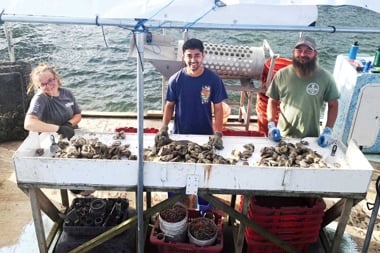Pest Control
Pesticides are very persistent in the environment and can remain actively airborne (for days, weeks and sometimes years), where they are inhaled and absorbed by humans and animals. You are not only exposed through home and garden pesticides but also through mothballs, flea collars and moth-proofing on fabrics.
Pesticides are very persistent in the environment and can remain actively airborne (for days, weeks and sometimes years), where they are inhaled and absorbed by humans and animals. You are not only exposed through home and garden pesticides but also through mothballs, flea collars and moth-proofing on fabrics. Pesticides and herbicides sprayed on lawns are easily tracked indoors, especially by golfers whose shoes can hold 2,4-D, for months. Pesticides kill people as well as pests.
Prevent pest problems by maintaining a clean house, removing sources of food and water, blocking cracks and other means of entry, using window screens and keeping your plants and pets healthy. Whenever possible, handpick and destroy pests, use traps, use beneficial insects such as lady-bugs, practice companion planting and use natural botanical pesticides sparingly.
Birds and beneficial insects prey on pests. Using pesticides kills indiscriminately and upsets nature's delicate balance. Plant shrubs and trees, and build birdhouses to encourage birds to remain in the area. A few simple, natural pest-control alternatives are listed below.
Ants
Block entry holes; sprinkle dried mint, chili powder, or borax and icing sugar where they enter
Aphids
Use insecticidal soap to wash them off. In a spray bottle, mix one part soap to eight parts water
Cockroaches/Silverfish
Sprinkle a mixture of equal parts baking soda and sugar in infested areas; use bay leaves, diatomaceous earth, or borax and icing sugar
Fleas
Plant pennyroyal around the house; buy a herbal flea collar; vacuum constantly, making sure to clean out vacuum; steam-clean carpets
Flies
Spread honey on strips of yellow paper and hang; hang clusters of cloves
Insects
Rub on skin either vinegar or a vegetable oil containing a few drops of citronella or pennyroyal
Mice
Use mousetraps or get a cat
Slugs
Use containers of beer to attract and trap them; use diatomaceous earth
Weevils
Use diatomaceous earth
Current Research on Natural Insecticides
Botanical insecticides once held a prominent place among pest control products. Altogether, botanicals commanded twenty percent or more of the commercial insecticide market prior to the Second World War. However, the discovery and unparalleled success of synthetic insecticides (organochlorines, organ-ophosphates, carbamates, and most recently, the pyrethroids) in almost all facets of insect control relegated botanical insecticides to secondary markets (home and garden, veterinary uses) and a trivial market share worldwide.
The well-documented cases of environmental contamination and the resistance of many key pests to synthetic insecticides provide im-petus for the development of alternative pesticide products with lesser environmental contamination and health impacts. Botanicals have a rapid and complete degradation in the environment which is viewed positively by the public and regulatory agencies.
Only a handful of botanical insecticides are currently approved for use in North America and Europe, including neem (Azadirachta indica). Neem is used as an antifeedant and a regulator of insect growth. Azadirachtin was originally isolated owing to its outstanding antifeedant effect on the desert locust, and this finding ushered in the concept of non-toxic crop protectants based on feeding deterence.
With the commercialization of neem, a number of other plant-derived materials, such as sweetsop and soursop, are under evaluation and development as botanical insecticides and antifeedants.
Currently, the future of botanical insecticides seems to rest with the success of neem in the marketplace if neem's performance continues to soar, the door will open for new botanical insecticides.




